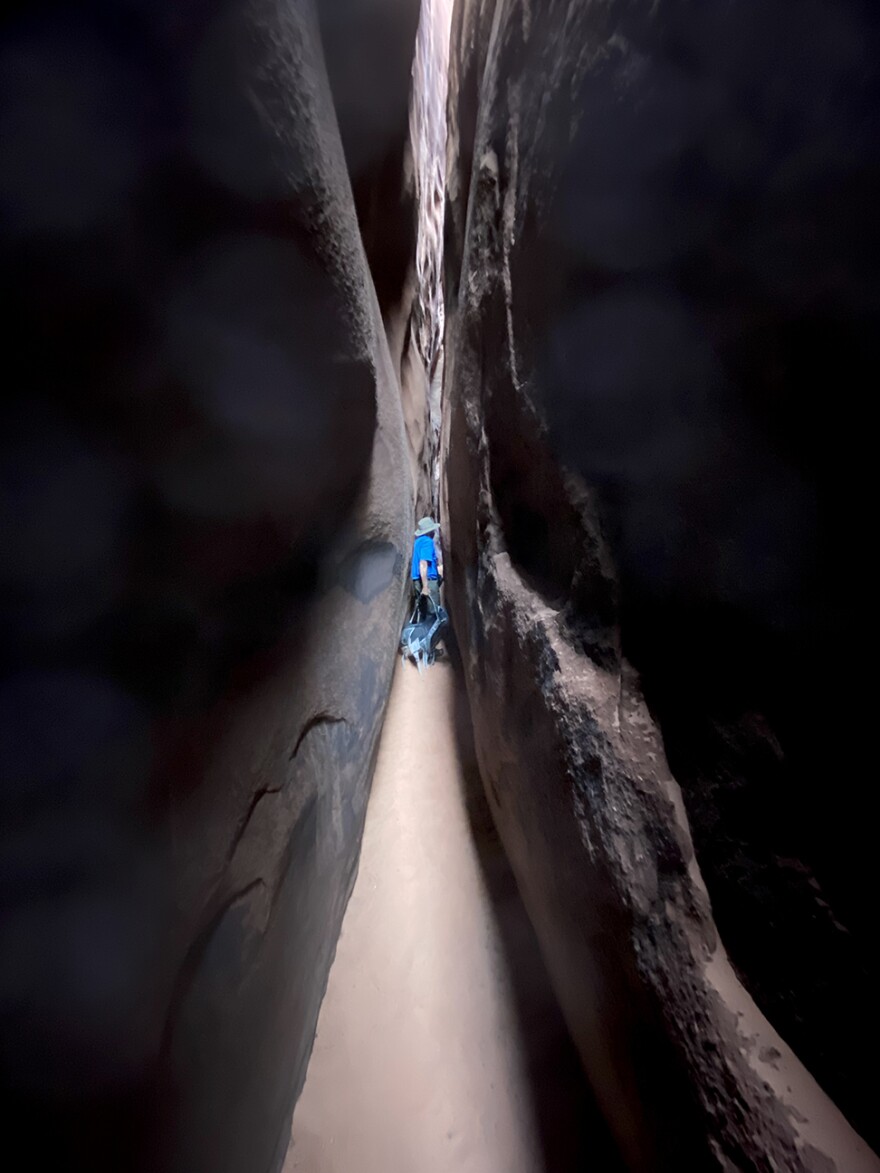A photographer set off to explore a slot canyon in the desert south of Escalante, Utah. He followed the rim of Brimstone Gulch until locating a break leading down to an eight-foot cliff. Knowing he wouldn’t be able to climb back, John Ey dropped to the bottom certain he could find a way through. He passed the point of no return on a Tuesday in October, 1996.
The walls of the gorge pressed tight, forcing him to squeeze sideways in places and wedge himself between the walls to work around obstacles. Late in the day and exhausted by the struggle, he came to another drop. His only option was to jump. Around the next corner the crack pinched out, making it impossible to continue. He found himself deep in a slot canyon, stunned by the realization he was trapped. Only five ounces of water and a couple of bites of a sandwich remained. The sandstone walls rose straight up 60-feet, enclosing him in a chamber too small to stretch out.
While working on a slot canyon story, I had heard about John Ey and called him. He told me how the Colorado Plateau was his favorite place on the face of the earth, then began recounting his ordeal.
“The nights were absolute terror,” John said. Having worn only shorts and a T-shirt, he couldn’t keep warm with temperatures dropping into the 40s. “I shivered violently. It was very hard to sleep. There was nothing to do but think, and pray, and try to sleep. The time went so slowly, there’s almost no way to describe it. I would fall asleep and I would wake up and think, ‘Oh, please be light,’ and then I’d look at my watch and only ten or fifteen minutes had passed. And that’s the way it went the whole night.
“All I could see from below was the rock and the blue sky, just that slit of sky above. I screamed on and off every ten minutes for eight days straight.” No one heard his cries for help. He continued to dehydrate, and thirst soon became an absolute obsession. At times he forced himself to cry so he could lick the tears from his fingers.
“On Sunday night,” he said, “I started to see some flashes. And then all of a sudden, I heard thunder and I thought, ‘Oh, my God!’. I didn’t know what was going to happen.” If the canyon flash flooded, he would die. “That was the only time I was really horrified,” he added. “There was a very, very light sprinkling. I stuck my tongue out and got about two or three drops and that was just wonderful. And then the storm subsided and passed on.”
A week after he became trapped, a search plane spotted a glint from the windshield of his pickup. The next morning rescue teams began to scour the surrounding desert.
“Near the end, I was getting very weak,” John told me. “I was having trouble standing.” On a piece of paper he wrote what he thought would be his last words. They identified who he was and gave the names of those to notify in case he died. “I never gave up,” he said. “I cried and really sobbed and begged God for help a lot, but I never gave up.”
On Wednesday he heard voices coming from the rim above. He gave a shout, and a rescuer called back. Expecting to find a body, they were surprised to hear a voice.
“And that was it,” John said, letting his story trail off.
After rigging ropes the rescue team pulled him to the surface, eight days after he had entered the slot canyon. They called his survival a miracle. And that night the weather changed. Temperatures fell into the 20s, and the next day it snowed. John Ey would not have lasted another night trapped in Brimstone Gulch.



